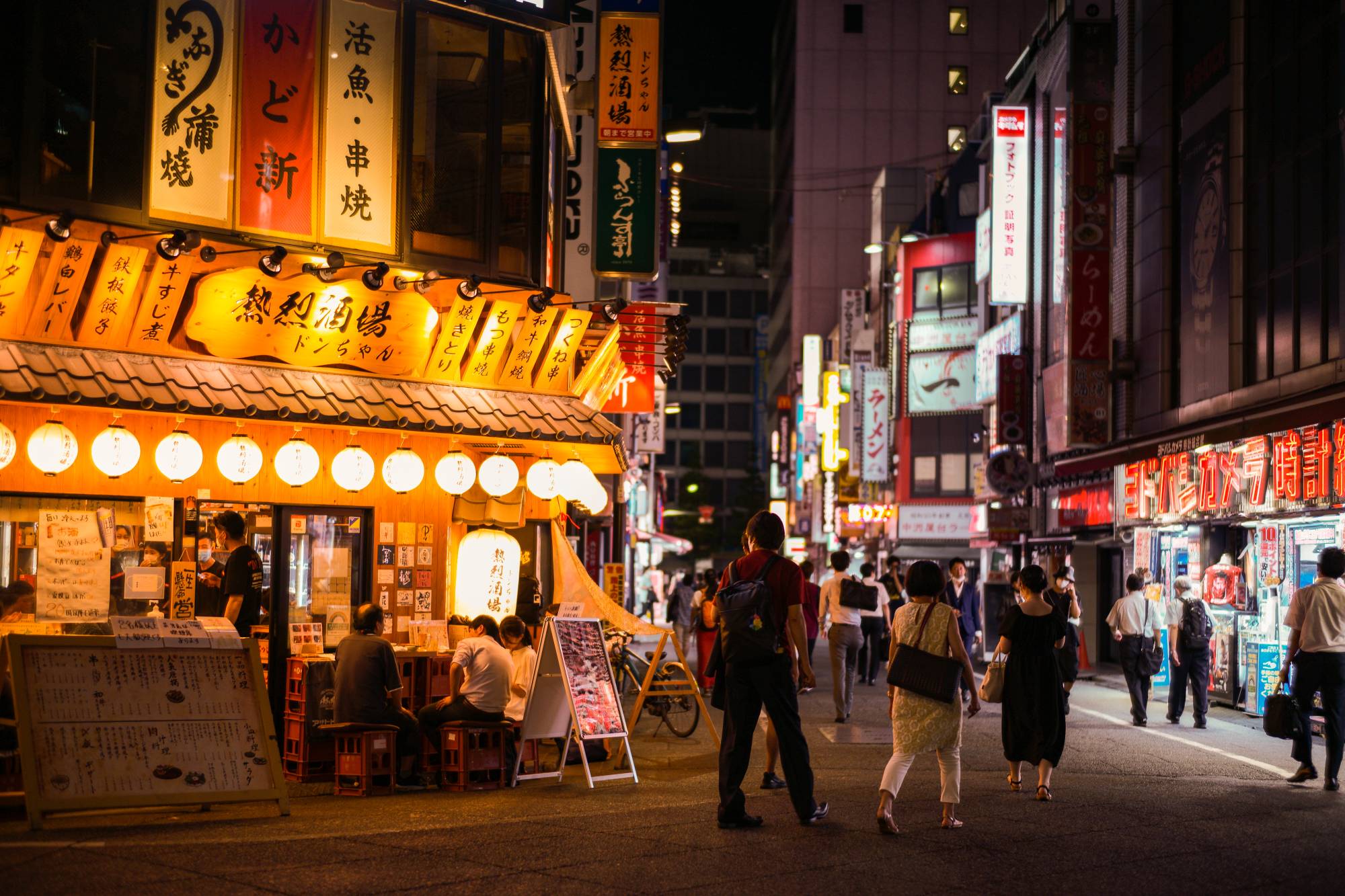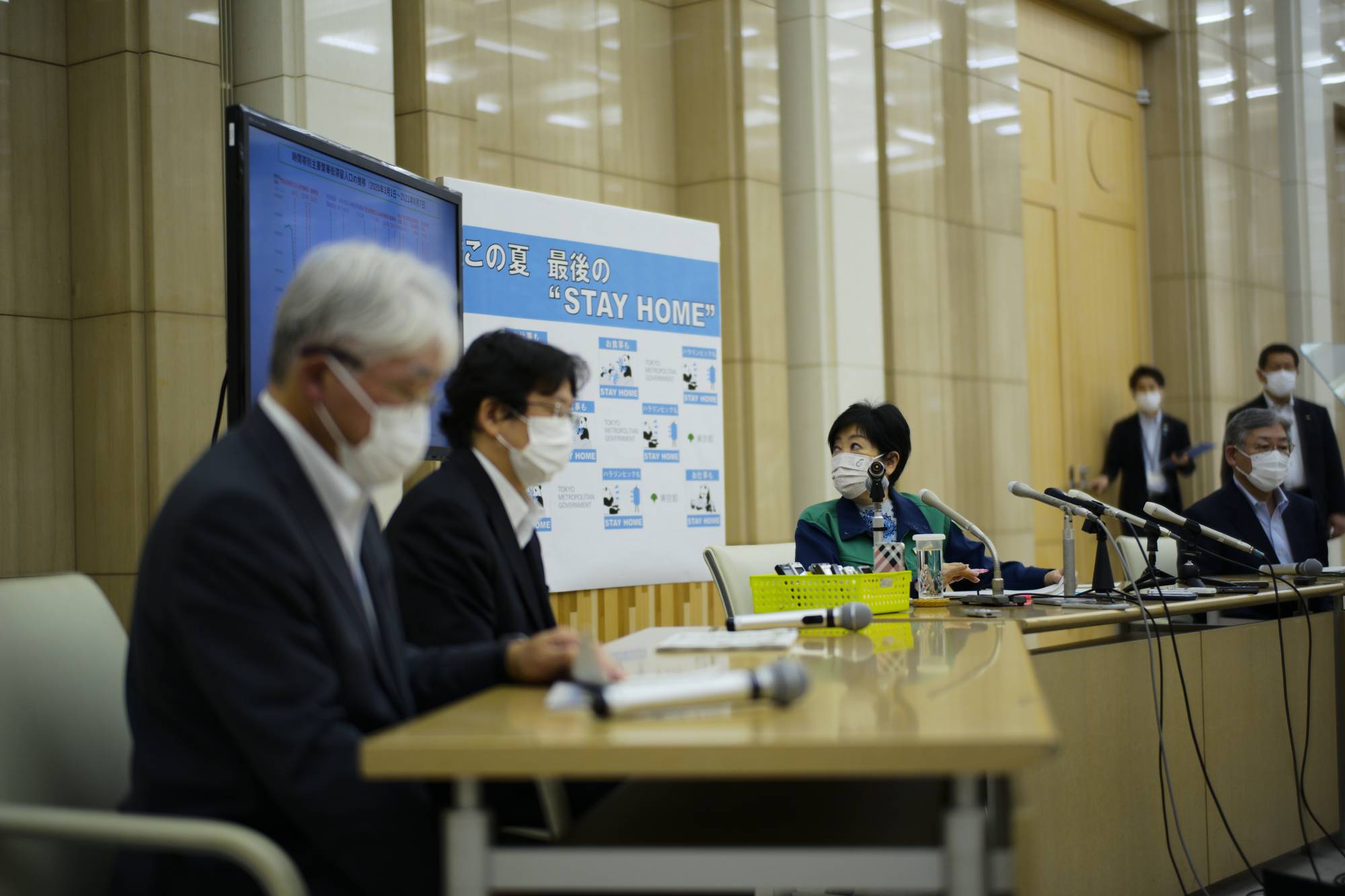Hospital beds for COVID-19 patients are increasingly in short supply as the rapidly growing outbreak in the Tokyo metropolitan region continues to inundate the local health care system with new cases.
The fifth wave of the pandemic — fueled by the deadlier, more contagious delta variant — is triggering new infections at a rate that has been surpassing previous records in the greater Tokyo area consistently since late July.
While many hospitals in and around the capital are nearing their limits, the intended impact of a major policy shift announced last week by Prime Minister Yoshihide Suga — to prioritize severe cases by having moderately ill patients recover at home — remains to be seen.
As of Aug. 4, the latest figure available, there were 45,269 nonhospitalized COVID-19 patients nationwide, according to the health ministry. In Tokyo, 19,396 people with the virus were staying at home as of Wednesday.
Infectious disease experts advising the capital said Thursday that severely ill patients are increasing rapidly, and that maintaining the health care system will soon become difficult if the outbreak continues to escalate.
“The situation is beyond control and has reached a degree of risk akin to a disaster,” said Norio Ohmagari, a top adviser to the Tokyo Metropolitan Government and the director of the Disease Control and Prevention Center at the National Center for Global Health and Medicine. “Residents need to do what they can to protect themselves from becoming infected.”

As of Thursday morning, 3,667 — or 61% — of the capital’s 5,967 beds for virus patients were occupied, according to the Tokyo Metropolitan Government.
The capital reported 4,989 new cases the same day, the city’s second highest tally after the 5,042 seen on Aug. 5.
While young people, who are at a lower risk of developing serious symptoms, accounted for a large portion of new cases at the beginning of the wave in July, experts say severe cases are beginning to emerge rapidly among older people.
The number of severely ill patients in Tokyo increased from 115 on Aug. 5 to a record-breaking 218 on Thursday.
The health ministry’s expert panel warned on Wednesday that the strain on the metropolitan region’s health care system has become critical.
Hiroshi Nishiura, a virologist from Kyoto University, warned the panel that all of Tokyo’s hospital beds set aside for COVID-19 patients could be filled over the next week.
As of Wednesday, the occupancy rates for beds set aside for coronavirus patients were 70% in Chiba, 75% in Kanagawa and 67% in Saitama.



Japan recorded 15,813 new cases Wednesday, surpassing the country’s previous high recorded a few days prior on Saturday. The rolling seven-day average of cases per 1 million people in the week through Tuesday was 110 in Japan, compared with 352 for the U.S., 410 for the U.K, 34 for South Korea and 0.08 for China, according to Our World in Data.
While the outbreak is steadily growing nationwide, Tokyo, Kanagawa, Chiba and Saitama — which together comprise most of the capital region — account for more than half of the country’s new infections.
A state of emergency is active in those four prefectures, as well as Osaka and Okinawa, until Aug. 31. More lenient quasi-emergency measures are effective for the same period in Hokkaido and the prefectures of Ishikawa, Kyoto, Hyogo and Fukuoka.
Suppressing foot traffic has been a major issue as the impact of the country’s largely voluntary measures continues to wane.
While young people have been the subject of intense scrutiny for supposedly being more active than other generations, figures published by the capital on Thursday showed that people between 40 and 64 years of age accounted for the largest portion of nighttime foot traffic in Tokyo’s most popular districts over the past four weeks.
As new strains of the coronavirus inflame outbreaks around the world, the notorious delta variant isn’t the only threat. Earlier this month, Japan reported its first case of the lambda variant from a woman who arrived from Peru on July 20. The variant is thought to have originated in that country but little is known about it.



As variants new and old exacerbate the growing wave, public officials are struggling to simultaneously contain the virus and prepare for the fallout.
On Wednesday, the capital reported two deaths linked to COVID-19, one of which was a man in his 30s with no pre-existing conditions who passed away earlier this month while isolating at home.
Infections among those sharing the same household continue to account for the largest portion of new traceable cases.
Last week, the Tokyo Metropolitan Government put forward revised guidelines meant to prioritize and streamline the hospitalization of severely ill COVID-19 patients.
The decision was made in response to Suga’s controversial announcement on Aug. 2 that the central government would begin to prioritize severe or high-risk patients by asking some people experiencing mild or moderate symptoms to isolate themselves at home.
The major policy shift was met with swift opposition, with most citing concerns that not only can mild patients worsen suddenly and unexpectedly, but that the shift could also make it logistically difficult for people to receive treatment.
In a time of both misinformation and too much information, quality journalism is more crucial than ever.
By subscribing, you can help us get the story right.
SUBSCRIBE NOW


